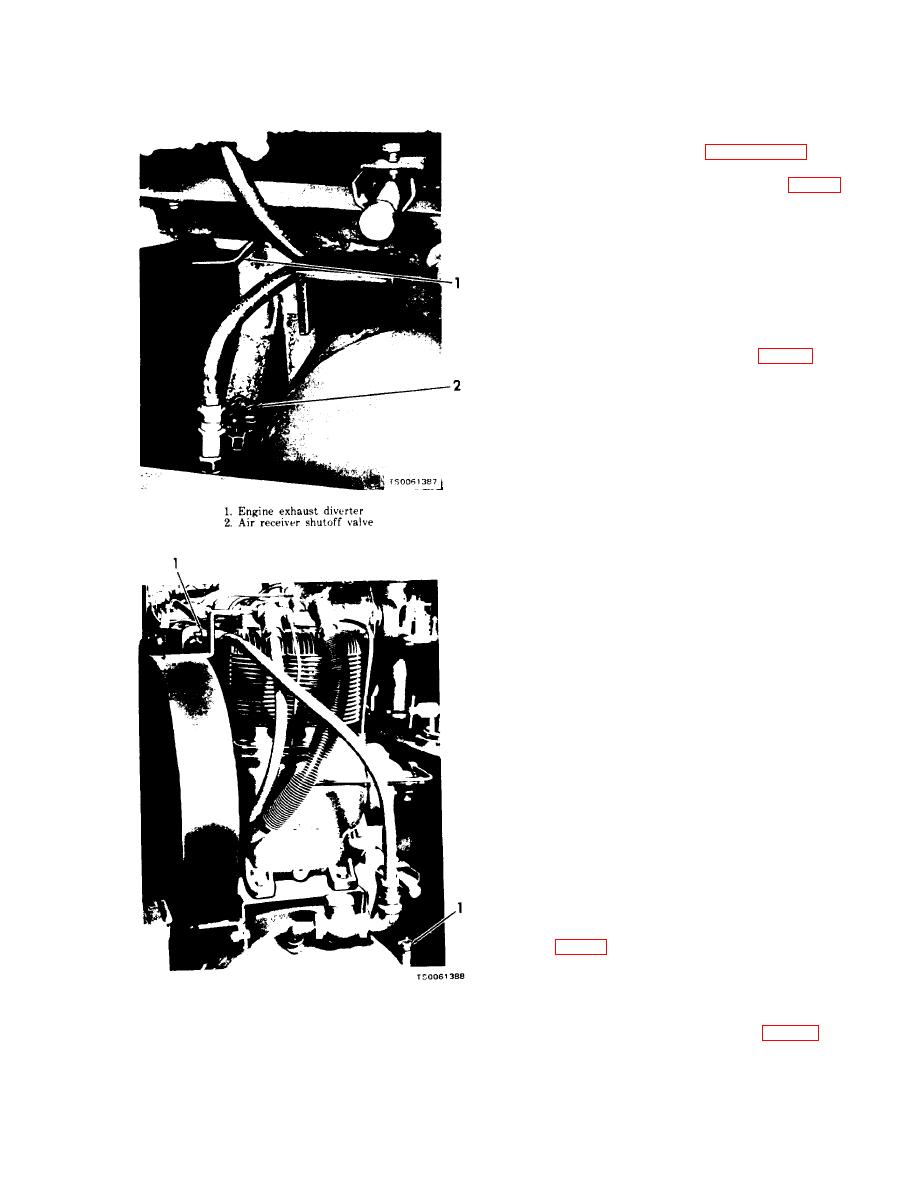
TM 5-4930-218-14
2-3. Starting
a. preparation for Starting. Before starting, be
sure that you perform the necessary daily preventive
maintenance services listed in paragraph 3-5.
b. Electric Starting of Engine.
(1) Push the engine exhaust diverter (1, fig. 2-5)
into position to direct the engine exhaust gases to the
atmosphere outside the unit.
WARNING
Do not operate the engine indoors
without taking precautions to vent
the exhaust gases. Engine exhaust
c o n t a i n s carbon monoxide, a
colorless, odorless, deadly poisonous
gas.
(2) Pull out the choke control (7, fig. 2-1).
(3) Open the throttle control (8) about 3/4 inch.
Turn control clockwise to lock in position.
(4) Place the ignition switch (10) to ON. Depress
and hold down the override switch (6).
CAUTION
When cranking the engine, you must
take care to prevent starting motor
overheating. Limit your cranking in-
tervals to 30 seconds and wait 2
minutes between attempts if the
engine does not start the first time. If
the engine does not start after you
have cranked it four or five times,
refer problem to organizational main-
tenance.
(5) Push starter switch (9).
(6) When engine starts, release starter switch (9).
(7) When oil pressure gage (1) exceeds 20 psig,
release the bypass switch (6).
(8) Throttle (8) should be pulled all the way out
for normal operation after engine reaches operating
temperature.
NOTE
Engine rpm under load should be 2200 rpm. See TM 5-
2805-203-14 for engine rpm adjusting instructions.
(9) As the engine warms up, push in the choke
control in increments to maintain smooth engine
operation with minimum choke setting. You should
have the choke pushed in fully before the engine
reaches operating temperature.
a. If the engine has been running under heavy
compressor load and is hot, push in the throttle con-
trol (8, fig. 2-1) to run the engine at fast idle until it
cools. Make sure the air is shut off to prevent con-
tinued operation of the compressor. When the engine
has cooled enough to dissipate the heat caused by the
heavy load, push in the throttle control fully.

